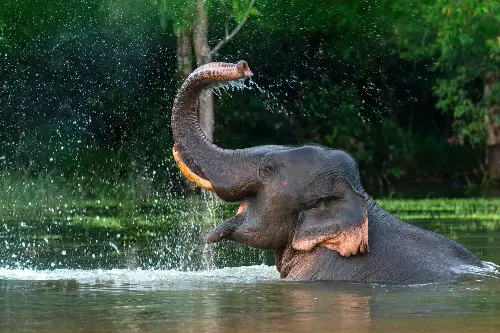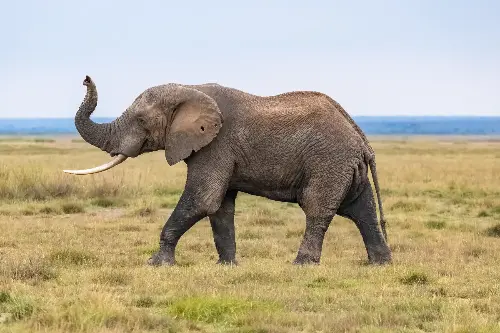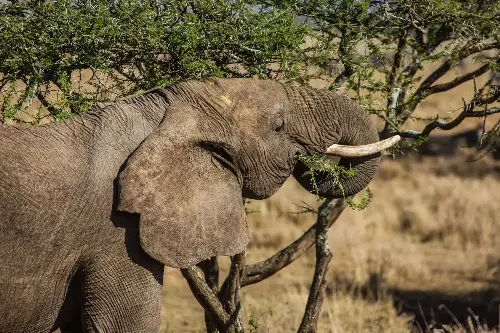Elephants, the gentle giants of our world, have walked the planet for millions of years. Their sheer size, intelligence, and complex social structures have captivated human interest throughout history. Despite their prominent standing among the Earth’s megafauna, there remain aspects of their lives that still hold mystery and enthral those who choose to follow in their immense footsteps. Here, we delve into the fascinating lives of these majestic creatures, uncovering the nuances that define their existence.

An elephant's life begins within the tight-knit matriarchal herd, where relationships are the cornerstone of their existence. Each herd is led by an experienced female, the matriarch, who commands the group with wisdom accrued over her lengthy lifespan, which can span up to 70 years. The matriarch’s role is paramount; she makes decisions that ensure the survival of the herd, including leading them to ancient watering holes and teaching the young crucial survival skills.
These intricately formed social bonds showcase the deep emotional capacity of elephants. They exhibit behaviours that suggest profound feelings of joy, grief, and empathy. Studies have documented elephants comforting kin by touching them with their trunks or emitting vocalisations during times of distress, rituals that mirror human reactions to loss.
Communication among elephants is a topic that entices researchers and animal lovers alike. These creatures convey messages across large distances using low-frequency sounds called infrasound, undetectable to human ears. These rumbling vocalisations can travel through the ground further than air, providing elephants with a unique channel to send vibrations which their kindred pick up through sensitive cells in their feet.

A lesser-known fact about these colossal beings is their environmental impact. Often referred to as 'ecosystem engineers,' elephants shape their habitat in significant ways. By knocking down trees and trampling vegetation, they create clearings in dense forests, allowing new plant species to grow and providing habitats for other wildlife. Their dung, too, is an ecological boon, dispersing plant seeds and providing a nutrient-rich source of food for other animals, playing a pivotal role in maintaining the biodiversity of their habitats.
Of the three species that exist today—the African savanna elephant, the African forest elephant, and the Asian elephant—each has adapted to their environment in distinct ways. The African savanna elephant, the largest of them all, can be identified by its expansive ears that mirror the shape of the African continent itself. These ears are not just for hearing; they are crucial for thermoregulation, acting as giant fans to dispel heat and keep these titans cool under the scorching African sun.

The African forest elephant, smaller and more elusive, roams the dense vegetation of the Congo Basin. Its tusks, straighter and downward-pointing, are adapted to navigating the forest undergrowth. These tusks, like those of all elephants, are not merely weapons or tools but are teeth—incisors which keep growing throughout their lives.
The Asian elephant, distinguishable by its smaller, rounded ears and a more domed back, inhabits a range of environments across the continent, from the wet jungles of Borneo to the grasslands of India. Contrary to popular belief, not all male elephants have tusks; in Asian elephants, some males, known as 'tuskers', sport these ivory canines while others, termed 'maknas', do not.
Elephant's remarkable intelligence is not limited to their social complexity and communication skills. They are capable problem-solvers, using tools such as sticks to scratch themselves or leaves as fly swatters. Scientists have revealed elephants' capacity to recognise themselves in mirrors, an ability that indicates a level of self-awareness most commonly associated with humans and some primates.

However, despite their grandeur, elephants face threats from poaching and habitat destruction, which have decimated their populations. The ivory trade is a dark cloud that hangs over their future, with African elephants classed as 'vulnerable' and Asian elephants as 'endangered' by the International Union for Conservation of Nature (IUCN). Conservation efforts continue around the globe to safeguard these extraordinary mammals from extinction.
To truly comprehend an elephant's world, one must appreciate the remarkable journey they undertake throughout their lives. From the matriarch's leadership to their environmental impact, from the complex social structures to the challenges they face for survival, elephants offer us a window into the mastery of adaptation and the intricate balance of our ecosystem.
Tracing the elephant's footsteps leads one through a narrative rich with emotion, intelligence, and a poignant reminder of our responsibility to these majestic creatures that roam our shared planet. As we continue to study and advocate for their protection, we unlock further secrets of their fascinating lives, ensuring that future generations can also marvel at their magnificence.
